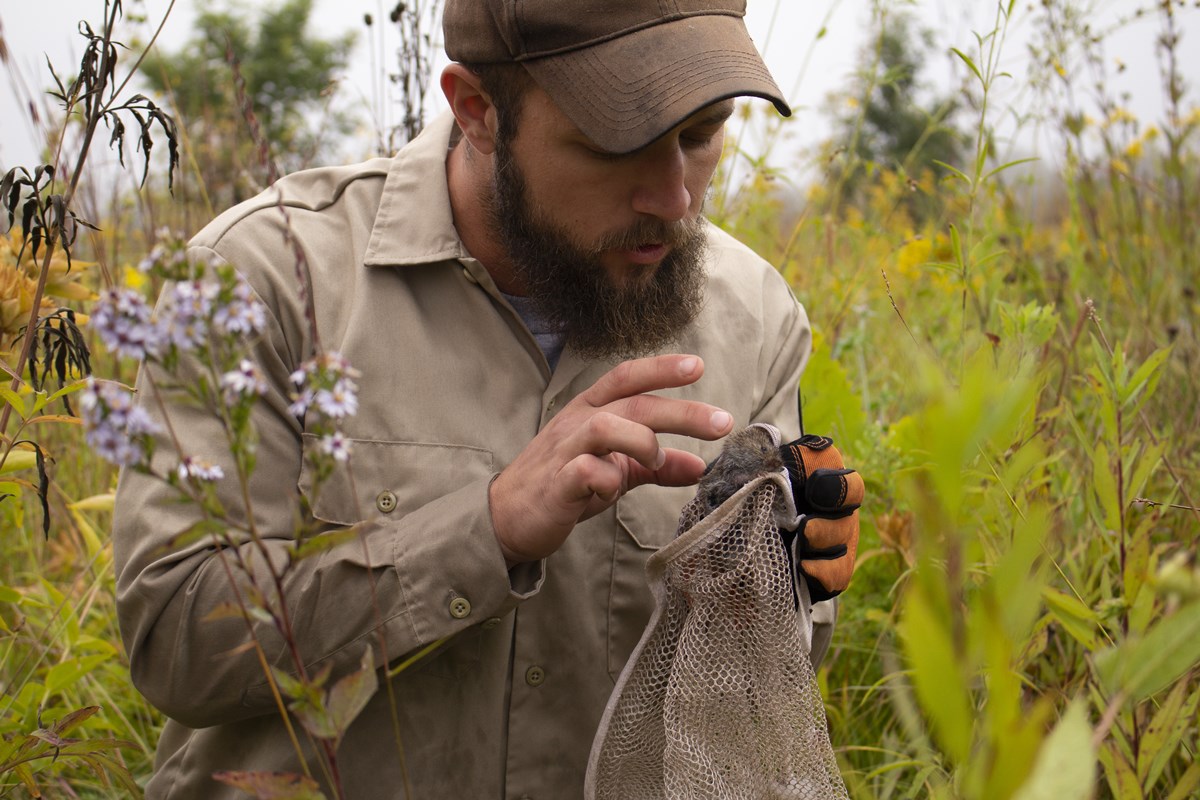Natural Resource Management
Protecting a Diversity of Habitats for Future Generations
Before we begin to restore a preserve’s health, our ecologists inventory its condition. Wildlife, plants, soils, water flow and more are analyzed, and historical records are reviewed. With that information we create a plan for restoring and managing the ecosystem. Sound public input is sought and incorporated. Then the hands-on work begins. Along the way, we evaluate progress and fine-tune our strategy.
Our natural resource management plans are complex. But the idea of preserving Lake County's plants, wildlife and our natural legacy for future generations is not.
What We’re Up Against
Fragmented habitats, degraded ecosystems, and the invasion of non-native species have decreased diversity within the preserves. Entire networks of plants and animals have become unbalanced.
Natural processes are disrupted. No harm was meant, but 150 years of settlement has greatly changed local habitat. The surface may look okay, but many habitats are not healthy. The gradual impact of people settling in this area has been astounding:
-
Prairies were plowed
-
Wetlands were tiled and drained for agriculture
-
Wildfires were suppressed
-
Predators and pollinators were wiped out
-
Invasive species were introduced and their populations exploded
-
Habitats have become islands in a sea of development
-
Streams are muddied
-
Prairies, woodlands and wetlands shrink smaller and smaller
Techniques Used to Reach the Goal
Only safe and field-proven techniques are used by well-trained crews to manage and restore your Lake County Forest Preserves. We partner with many organizations where we receive consensus on the restoration techniques we use. These techniques are used throughout the nation and are approved by such environmental guardians as the U.S. Environmental Protection Agency and the U.S. Fish and Wildlife Service.
-

Prescribed burns
This is the most efficient and economical tool available for managing Lake County’s natural communities. Without fire, non-native invasive species would shade out native plants.
View More Details
-

Deer population management
Deer numbers are so high that their populations are not in balance with the habitat. Left unchecked, overbrowsing by deer damages habitat for other native plants and animals.
View More Details
-

Managing invasive species
Invasive species have a negative effect on our natural areas and threaten the health of commercial, agricultural and recreational activities dependent on healthy ecosystems.
View More Details
-

Monitoring wildlife populations
Our ecologists use a variety of methods to find, measure and map animal communities within the forest preserves.
View More Details
-

Monitoring plant communities
Data collected through plant monitoring helps us make sure that common species remain common and that rare, threatened, and endangered species receive continued protection and assistance.
View More Details
Planting thousands of native species—After invasive plants are removed, habitat is replenished by reintroducing native trees, shrubs, flowers, grasses and sedges.
Providing nesting areas for wildlife—Habitat is often supplemented by building nesting structures for birds, roosting boxes for bats and underwater shelter for fish.
Removal of drain tiles—When many forest preserves were acquired, there were few areas with standing water because farmers had drained the land for agriculture. Our ecologists have removed miles of drain tiles to restore a more natural flow of water across the land.
Restoring streams and rivers—Human presence in watersheds has dramatically changed the pattern of flow in our rivers. Dam removal, riffle-pool restoration and reconnecting streams to floodplains are some of the ways we improve moving waters.
Stocking native fish—We work with the Illinois Department of Natural Resources to manage a number of lakes and ponds that provide quality fishing.